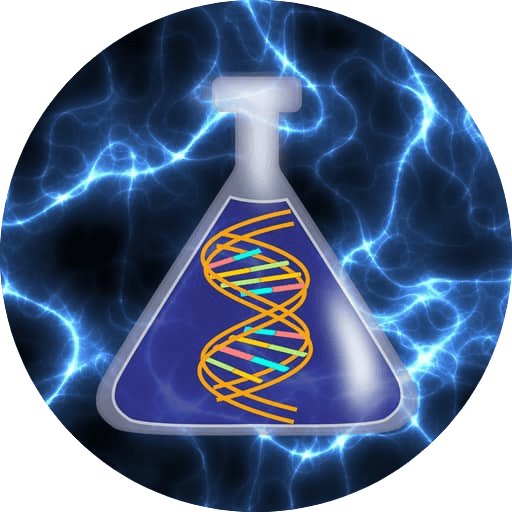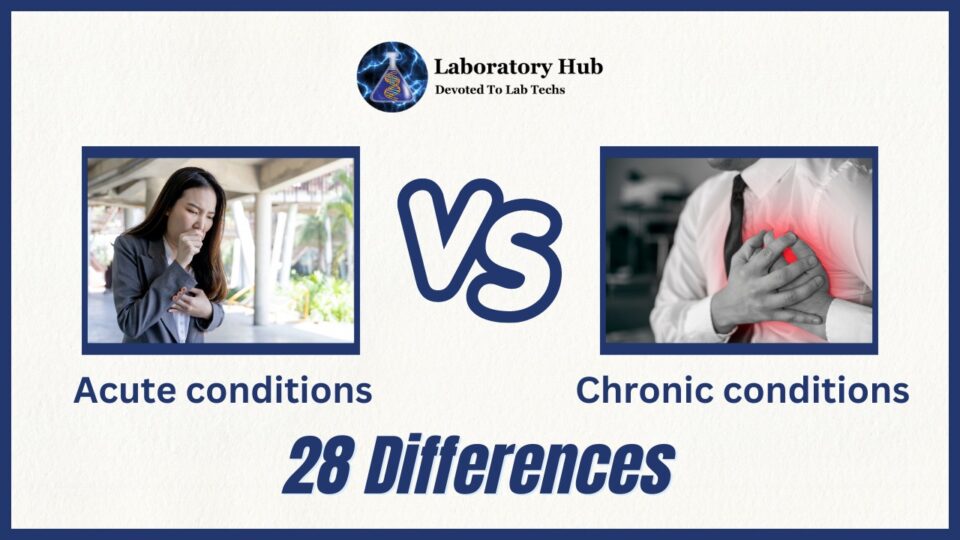Understanding acute and chronic illnesses helps doctors diagnose, treat, and manage patients. Acute and chronic diseases have different symptoms, development, and effects on patients and healthcare systems. Medical personnel can give patient-specific treatment by understanding these variances.
Introduction Acute and Chronic Conditions
Acute conditions are abrupt and brief. They can occur suddenly and cause mild to severe symptoms. Acute conditions include colds, flu, fractures, and appendicitis. Self-limiting diseases resolve in a few days to a few weeks without medical treatment. Acute illnesses are easier to identify due to their apparent symptoms and temporal link to the initiating event or exposure.
However, chronic diseases present unique obstacles for individuals and healthcare practitioners. Chronic diseases span months, years, or even a lifetime. Chronic illnesses can develop slowly and have fluctuating symptoms. Diabetes, heart disease, asthma, arthritis, depression, and anxiety are chronic illnesses. To manage symptoms, prevent complications, and maximize quality of life, many illnesses require lifestyle changes, medication, and regular monitoring.
Acute and chronic illnesses differ beyond time and symptoms. Chronic illnesses are multifaceted, comprising genetic, environmental, and behavioral variables, while acute disorders have a clear cause, such as an infection or damage. Acute diseases frequently respond effectively to specific therapies, leading to complete recovery, whereas chronic disorders may require long-term management techniques to control symptoms, prevent disease progression, and improve well-being.
Healthcare workers must understand these fundamental differences between acute and chronic diseases to give proper treatment and support. Medical professionals may improve patient outcomes and healthcare delivery by tailoring diagnosis, treatment, and management to each kind of ailment. In the next parts, we will examine acute and chronic illnesses’ diagnostic criteria, treatment choices, and effects on society.
Detailed Comparison Between Acute and Chronic Conditions
|
S. No. |
Aspect |
Acute Condition |
Chronic Condition |
|
1 |
Onset |
Sudden onset |
Gradual onset |
|
2 |
Duration |
Short-term (hours to days) |
Long-term (months to years) |
|
3 |
Intensity |
Typically severe intensity |
May range from mild to severe |
|
4 |
Course |
Self-limiting, resolves with treatment or time |
Long-lasting, persists over an extended period |
|
5 |
Symptoms |
Symptom may be intense and appear suddenly |
Symptoms may be persistent or recurring over time |
|
6 |
Treatment |
Often focused on immediate relief and stabilization |
Requires ongoing management and maintenance |
|
7 |
Prognosis |
Generally good with appropriate treatment |
Variable, depending on the specific chronic condition |
|
8 |
Etiology |
Can result from infections, injuries, or acute events |
Can result from ongoing processes or underlying diseases |
|
9 |
Pathophysiology |
Often characterized by a temporary disruption |
Involves long-term changes in bodily structure or function |
|
10 |
Recovery |
Complete recovery is possible in many cases |
Recovery may be partial or management-oriented |
|
11 |
Impact |
May have a sudden and significant impact on daily life |
Can have a prolonged impact on daily life |
|
12 |
Examples |
Acute respiratory infection, acute appendicitis |
Chronic obstructive pulmonary disease, diabetes |
|
13 |
Monitoring |
May require monitoring during the acute phase |
May require ongoing monitoring and disease management |
|
14 |
Prevention |
Focuses on preventing future acute episodes |
Focuses on managing symptoms and preventing progression |
|
15 |
Inflammation |
Acute inflammation often present |
Chronic inflammation may be a characteristic feature |
|
16 |
Complications |
Acute complications can arise |
Long-term complications may develop or worsen |
|
17 |
Response |
Often prompts an immediate response |
Requires ongoing management and adaptation |
|
18 |
Impact on Health |
May temporarily impact overall health and well-being |
Can have long-term effects on overall health |
|
19 |
Age of Onset |
Can occur at any age |
Often associated with older age |
|
20 |
Disease Progression |
Rapid progression of symptoms and pathology |
Slow progression of symptoms and pathology |
|
21 |
Tissue Damage |
Generally reversible |
Often involves irreversible tissue damage |
|
22 |
Treatment Approach |
Focuses on providing acute relief and addressing immediate complications |
Focuses on long-term management and preventing disease progression |
|
23 |
Public Health Impact |
Often associated with outbreaks and infectious diseases |
Can have a significant burden on healthcare systems and society |
Also Read: Innate Immunity vs Adaptive Immunity- 35 Differences
Frequently Asked Questions (FAQs)
What distinguishes an acute disease from a chronic one?
Acute conditions often last a few days to a few weeks and are characterised by their abrupt onset and brief duration. They frequently show up with observable symptoms and usually go away on their own or with medical help. On the other hand, chronic conditions are long-lasting and can linger for months, years, or even a lifetime. They could manifest gradually and exhibit varying symptoms, necessitating constant therapy and care.
What are the common treatments for acute conditions?
Acute diseases vary in their treatment, but they frequently require controlling symptoms as well as the underlying cause. Medication, rest, water, painkillers, and other supportive measures may be used in this situation. To treat the acute disease, it may occasionally be essential to undergo medical procedures or surgery.
What are some acute conditions examples?
The common cold, influenza, traumas including fractures or sprains, acute appendicitis, and urinary tract infections are all instances of acute illnesses. These illnesses start out suddenly and often go away on their own within a short amount of time.
What difficulties do chronic illnesses present?
Patients and healthcare professionals constantly face difficulties as a result of chronic diseases. They need long-term management, which frequently include modifying one’s lifestyle, routine observation, and medication. Chronic illnesses can have an effect on a person’s quality of life, necessitating modifications to regular activities and sometimes resulting in problems if not effectively treated.
Can chronic illnesses be treated?
Chronic illnesses are typically not totally curable. However, symptoms may be managed, disease development can be halted, and people can enjoy happy lives with the help of good management and therapy. Treatment frequently focuses on enhancing quality of life and avoiding problems.
What are some typical chronic diseases?
Diabetes, heart disease, asthma, arthritis, chronic obstructive pulmonary disease (COPD), diabetes, and mental health issues including depression and anxiety are examples of common chronic illnesses. These illnesses frequently call for continuing care and assistance from medical specialists.
How are chronic illnesses treated?
Chronic disease management requires an all-encompassing strategy that may include prescription drugs, dietary and activity changes, routine checkups with the doctor, and self-care routines. The management of chronic diseases must also include patient support and education.
Can acute illnesses become chronic illnesses?
An acute ailment may occasionally worsen and becoming chronic. For instance, if a back injury is not adequately handled or treated, it might result in persistent back discomfort. Although many acute diseases heal without leaving any lasting effects, not all acute disorders progress into chronic ones.
Are there certain age groups where chronic illnesses are more common?
While chronic illnesses can affect people of all ages, they are more common among older persons. This is brought on by elements including cumulative exposure to risk factors, changes brought on by ageing, and the effects of chronic diseases that could manifest earlier in life.
How may people lessen their chance of getting chronic illnesses?
A healthy lifestyle can lower the likelihood of getting chronic diseases. This include obtaining regular exercise, eating a healthy diet, abstaining from smoking and excessive alcohol use, managing stress, and scheduling frequent checkups to catch any developing health problems early on. Additionally, taking prescription drugs as indicated and according to medical recommendations for treating pre-existing diseases will assist avoid difficulties and preserve general wellbeing.
User Review
( votes)
Laboratory Hub aims to provide the Medical Laboratory Protocols & General Medical Information in the most easy to understand language so that the Laboratory Technologist can learn and perform various laboratory tests with ease. If you want any protocol to be published on Laboratory Hub, Please drop a mail at contact@laboratoryhub.com. Happy Learning!

